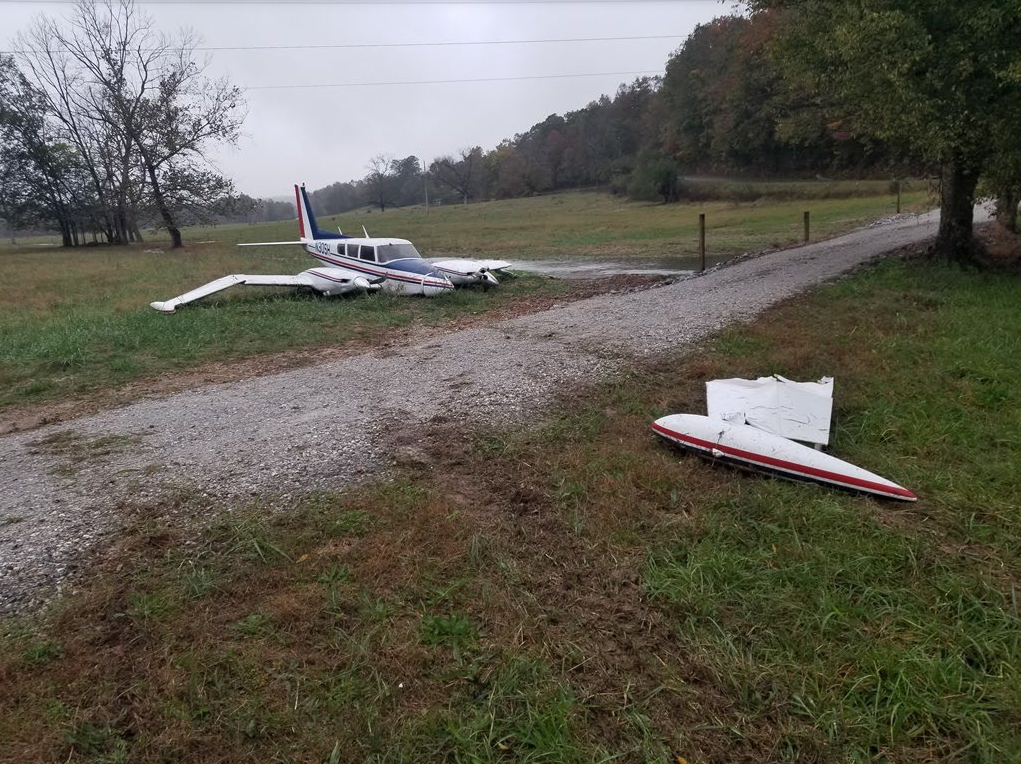
ASN Wikibase Occurrence # 345335
This information is added by users of ASN. Neither ASN nor the Flight Safety Foundation are responsible for the completeness or correctness of this information.
If you feel this information is incomplete or incorrect, you can submit corrected information.
| Date: | Friday 29 October 2021 |
| Time: | 16:00 |
| Type: |  Piper PA-30 Twin Comanche |
| Owner/operator: | Medic Choppers LLC |
| Registration: | N30SH |
| MSN: | 30-1262 |
| Year of manufacture: | 1966 |
| Total airframe hrs: | 5662 hours |
| Engine model: | Lycoming IO-320-B1A |
| Fatalities: | Fatalities: 0 / Occupants: 3 |
| Aircraft damage: | Substantial |
| Category: | Accident |
| Location: | near Waverly, TN -
 United States of America United States of America
|
| Phase: | En route |
| Nature: | Private |
| Departure airport: | Gallatin-Music City Executive Airport, TN (KXNX) |
| Huntingdon-Carroll County Airport, TN (KHZD) | |
| Investigating agency: | NTSB |
| Confidence Rating: |
On October 29, 2021, about 1600 central daylight time, a Piper PA-30, N30SH, sustained substantial damage when it was involved in an accident near Waverly, Tennessee. The pilot and the two passengers were not injured. The airplane was operated as a Title 14 Code of Federal Regulations Part 91 personal flight.
The pilot departed on a cross-county flight in his twin-engine airplane and set the fuel selector to the auxiliary tanks. About 7-10 minutes into the flight, the auxiliary tanks ran out of fuel and the pilot switched the fuel selector handles to the main tanks, which the fuel gauge indicated were a ¼-full. The pilot then decided to land and purchase fuel. When the airplane was on a four-mile final approach to the diversion airport, the left engine stopped producing power. About 30 seconds later, the right engine stopped producing power. The pilot was unable to maintain altitude and made a forced landing to a field. The airplane struck a hay bale, which resulted in substantial damage to the fuselage and wings. Postaccident examination of the airplane revealed six fuel tanks were intact and empty of fuel. A fuel line fitting to the right auxiliary tank was observed to be loose, stained blue/green, and most likely had been actively leaking fuel. The amount of fuel lost due to this leak could be not determined.
The airplane was equipped with three fuel tanks (main, auxiliary and tip tank) in each wing, for a total of 120 gallons total (114 useable). Each tank was independent of each other, so the leak in the right auxiliary fuel tank would have only affected the fuel level in that tank. The pilot reported there was about 55 gallons of fuel onboard when he departed, and the airplane consumed an average of 15 gallons per hour. Based on this information, if the right auxiliary tank (15 gallons total) was empty due to the leak, there still should have been about 40 gallons of fuel onboard (or about 2.6 hours of fuel).
The pilot said that he did not visually check the fuel quantity prior to flight because the airplane “…does not have a way to visually check the fuel and know how much fuel you have in the tanks.” However, the Pilot Operating Handbook states, that the pilot should visually check the fuel supply in each tank before flight. As such, even though the pilot thought he had sufficient fuel to complete his flight, postaccident examination of the airplane revealed the fuel tanks were not breached and empty of fuel. A loose fuel line fitting in the right auxiliary fuel tank likely contributed to some unquantifiable loss of fuel from that tank. Had the pilot used the preflight checklist, and visually looked in all six fuel tanks, he would have seen that there was insufficient fuel in all of the tanks to complete the flight. As a result, both engines lost total power due to fuel exhaustion 20 minutes after takeoff, which resulted in a forced landing to field.
Probable Cause: The pilot’s improper pre-flight fuel planning, which resulted in a total loss of engine power to both engines due to fuel exhaustion.
Accident investigation:
 |
|
Sources:
NTSB
https://data.ntsb.gov/Docket?ProjectID=104185
Location
Images:

Revision history:
| Date/time | Contributor | Updates |
|---|---|---|
| 08-Sep-2023 03:46 | Captain Adam | Added |
Corrections or additions? ... Edit this accident description
The Aviation Safety Network is an exclusive service provided by:


 ©2024 Flight Safety Foundation
©2024 Flight Safety Foundation